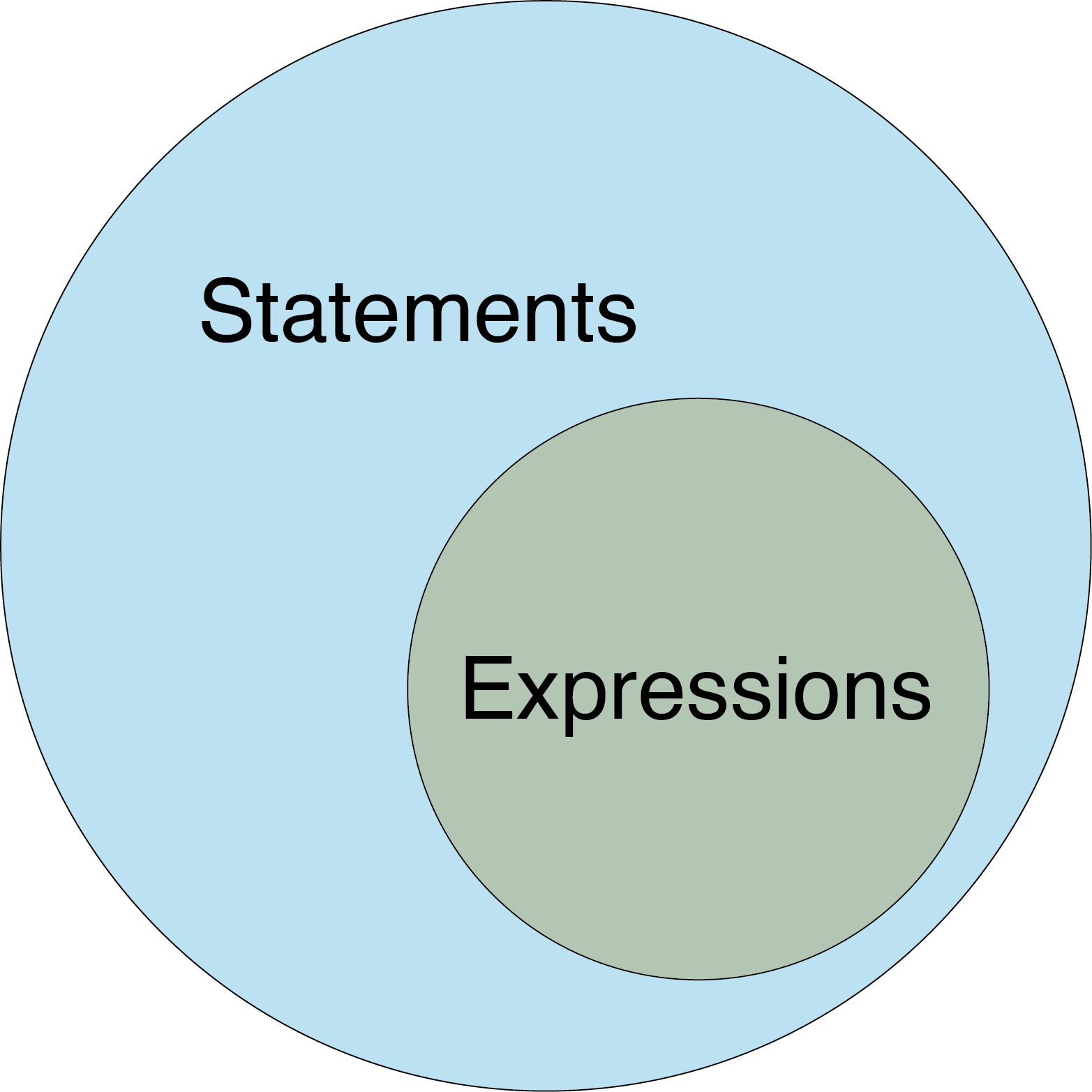Making Sense of Expressions, Statements, and Semicolons
by Gordon Zhu, February 2025
JavaScript programs are made up of 0 or more statements. You can think of a statement as a standalone instruction, which may or may not produce a value.
statement1 statement2 statement3 . . .
A statement may contain expressions, which are snippets of code that always produce a value.
// A statement without any expressions. let nothing; // A statement with the expression 10 + 10. let number = 10 + 10; // A statement composed of ONLY an expression. 'hello';
Since functions accept expressions as arguments, you can test if something is an expression by passing it into a function. If you don't get an error, you have an expression. For example, console.log(1) works because 1 is an expression.
Since a statement can be composed of an expression and nothing else, every expression on its own is a statement, but not every statement is an expression.

A statement that can contain other statements is known as a block statement, or simply a block. Blocks are enclosed by { and }.
if (true) {
statement1
statement2
statement3
.
.
.
}
Semicolons
A semicolon should follow any statement that is not a block. As an example, if-statements, if...else statements, and function declarations are all block statements, and should not be followed by semicolons.
A note about functions
The only case where you will have a block followed by a semicolon is when you're using a function expression as part of a non-block statement.
// Using a function as part of an assignment.
let myFunction = function emptyFunction() {
// block
};
function example() {
// Using a function as part of a return statement.
return function f() {};
}
A lot of people think this is sort of an exception, but it's actually not. Any statement that would normally end in a semicolon, will still end in a semicolon, even when a function is involved. So at a more general level, I think of it like this:
variableName = expression;
function f() {
return expression;
}
In the above two examples, every expression should be followed by a semicolon. It does not matter one bit if the expression is a function.
Mistaking objects for blocks
Many beginners make the mistake of assuming object literals like {name: 'Gordon'} are blocks because they are also enclosed by { and }, but this is wrong. Remember, blocks can contain arbitrary statements. This is not true of objects, which can only contain key: value pairs.